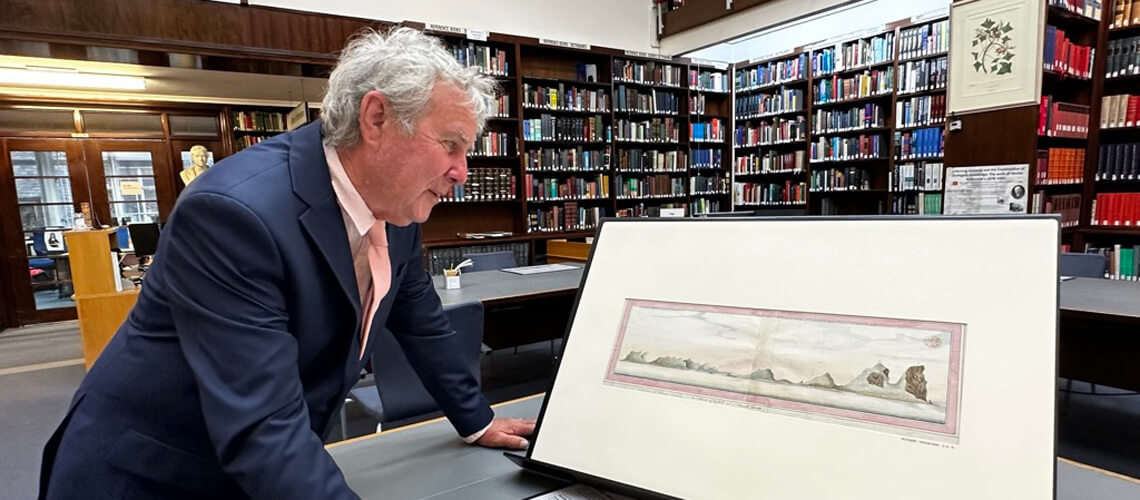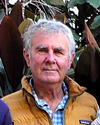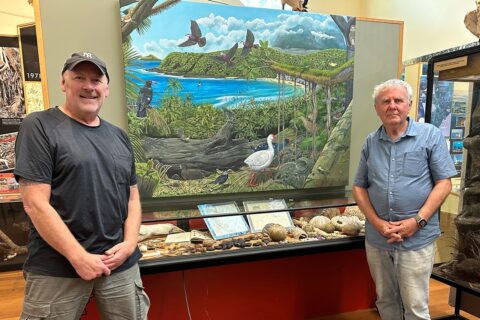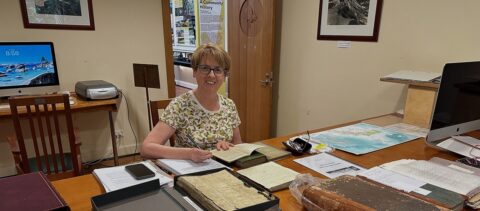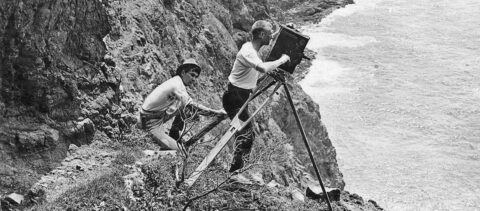During the winter months, I had a long break off the island, and toured some of the remote areas of west and north Scotland, travelling as far as the Shetland Islands.
Wherever I went, of course I visited museums, and encountered a variety of sizes, themes and sophistication. Here are some photographic highlights.
The Natural History Museum of London
The Natural History Museum of London
At the Natural History Museum, I visited their library and was delighted to see a sketch of Lord Howe Island from the Watling collection I had not seen before.
Natural History Museum London – So much to see here, but one of the new displays featured a very good concise history of major natural science milestones, in a compact space using interactive digital screens to follow each story.
Natural History Museum London
Natural History Museum London
Interestingly there is an acknowledgement of where the many items held at the Natural History Museum of London have come from in a different era of Colonialism, and what the museum is doing to address this.
Scotland, Orkney and the Shetland Islands
Torridon, on the wet coast of northern Scotland.
Photographing Puffins at Hemaness Reserve, Shetland
Boat transport to Noss, one of the smallest of the Shetland Islands.
A small “shed museum” on the island of Noss where a seasonal ranger from RSPB is on hand. If visitors wave from nearby Shetland, they will come in a small rubber ducky and pick you up for access to seabird colonies; and you have a briefing in their shed museum.
In a small but up to date environmental display at the Sumburgh lighthouse museum at the southern tip of Shetland, I noted a panel about the concern of plastic in seabirds which is a threat in common with Lord Howe Island’s seabirds.
At the Sumburgh lighthouse museum I was surprised by the colourful marine life to be found around Shetlands - but I am not sure how many people would snorkel to see it!
And an exhibit detailing a profile of a lighthouse keeper at Sumburgh.
The outdoor museum of an excavated stone age village at Skara Brae – with many individual “houses” connected by paths that were covered over forming tunnels, as protection in the harsh winters.
Interpretive signs showing life in the 5,000-year-old stone age houses, bring to life the excavations.
Rackwick Bay on Hoy, one of the Orkney Islands.
At the remote Rackwick Bay on Hoy (one of the Orkney Islands) the restored school house from 1850s.
At a remote village Burravoe on the Shetland island of Unst a small museum detailing the first people to the Shetlands. It was interesting at all the museums visited to follow the story of humans through time in these islands.
At an RSPB Visitor Centre at Loch Garten in the Cairngorms, Scotland, live tv cameras relayed to large screen monitors for visitors to watch the nearby Osprey nest activity.
At the War Museum Lyness on Hoy (one of the Orkney Islands) the old fuel depot pump station has been converted into a museum, and retains the original pumping equipment used to pump stored fuel to ships of the British Navy fleet in 1st and 2nd World Wars.
At the War Museum Lyness on Hoy (one of the Orkney Islands) the old fuel depot pump station has been converted into a museum, and retains the original pumping equipment used to pump stored fuel to ships of the British Navy fleet in 1st and 2nd World Wars.
At Lerwick, the main town on Shetland, the modern museum has a fascinating geology story about how Shetlands formed from muds deposited on the seafloor near the South Pole. This geology story is of world significance, and all of Shetlands is recognised as a UNESCO Global Geopark. Many of the smaller museums throughout Shetland islands details their regions special geology stories.
At Lerwick, the main town on Shetland, the modern museum has a fascinating geology story about how Shetlands formed from muds deposited on the seafloor near the South Pole. This geology story is of world significance, and all of Shetlands is recognised as a UNESCO Global Geopark. Many of the smaller museums throughout Shetland islands details their regions special geology stories.
At Lerwick, the main town on Shetland, the modern museum has a fascinating geology story about how Shetlands formed from muds deposited on the seafloor near the South Pole. This geology story is of world significance, and all of Shetlands is recognised as a UNESCO Global Geopark. Many of the smaller museums throughout Shetland islands details their regions special geology stories.
The Lerwick museum has an extensive modern display about human life on Shetlands through the ages, including their food resources.

